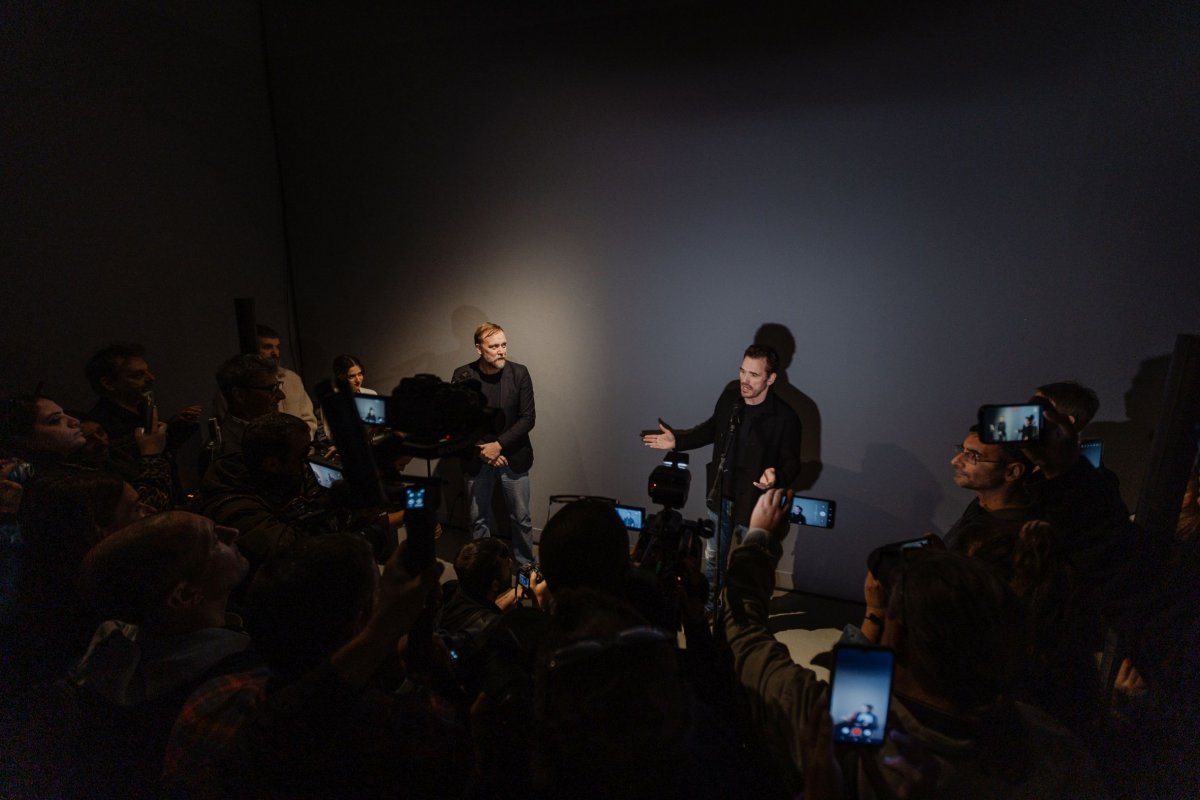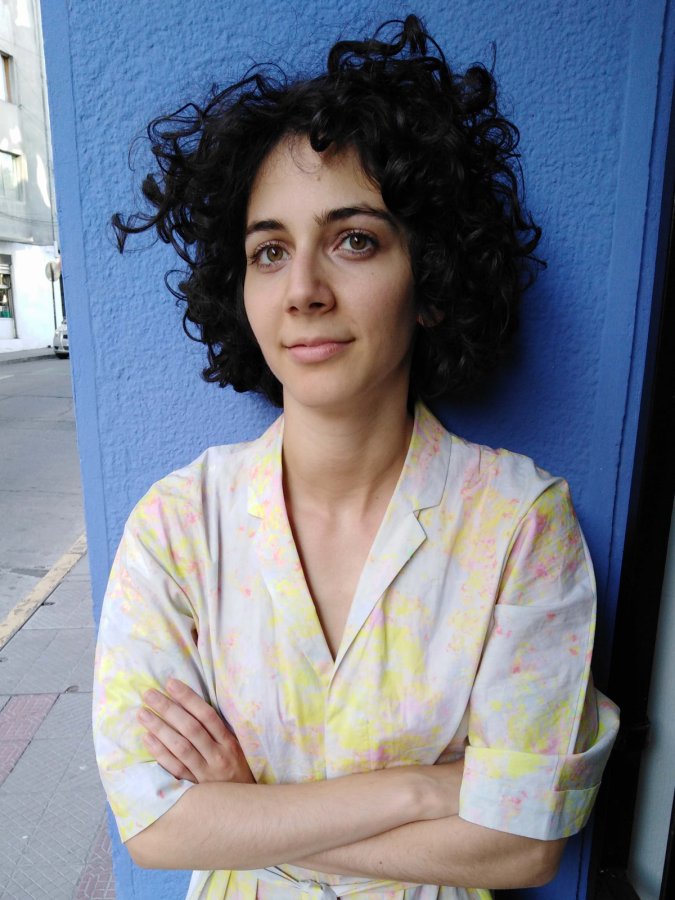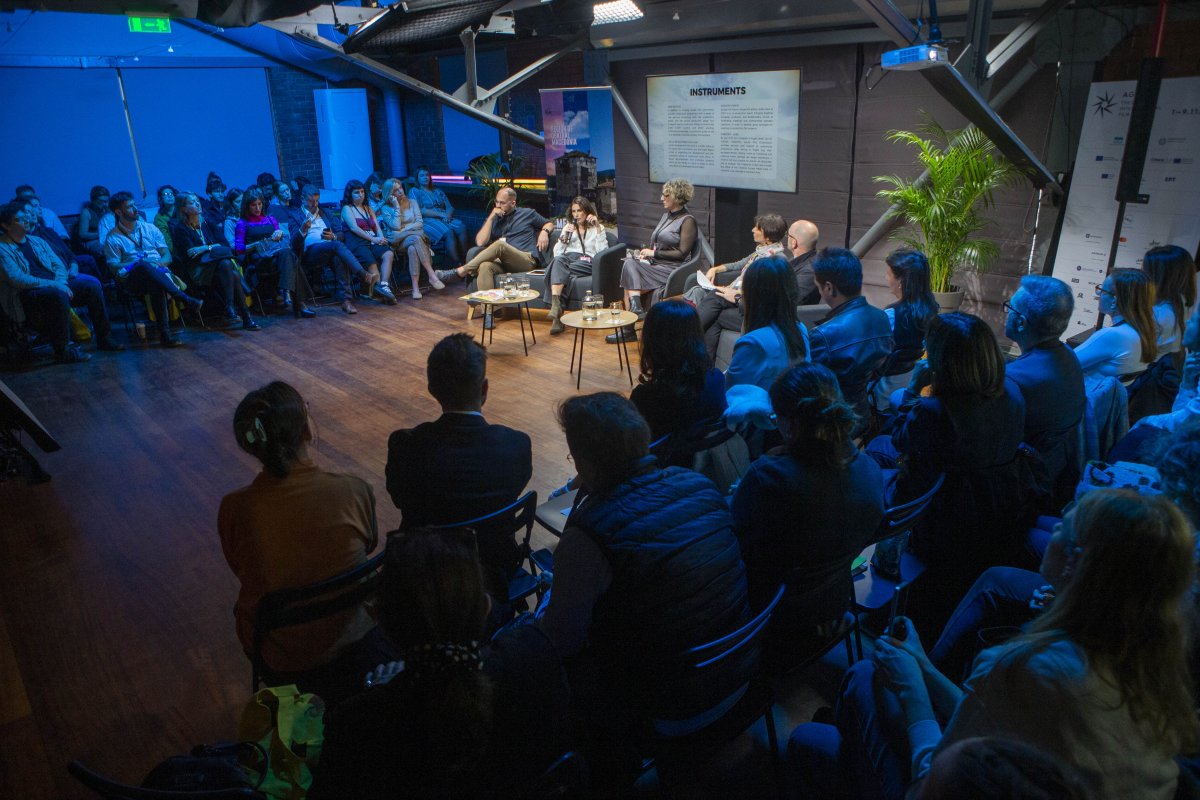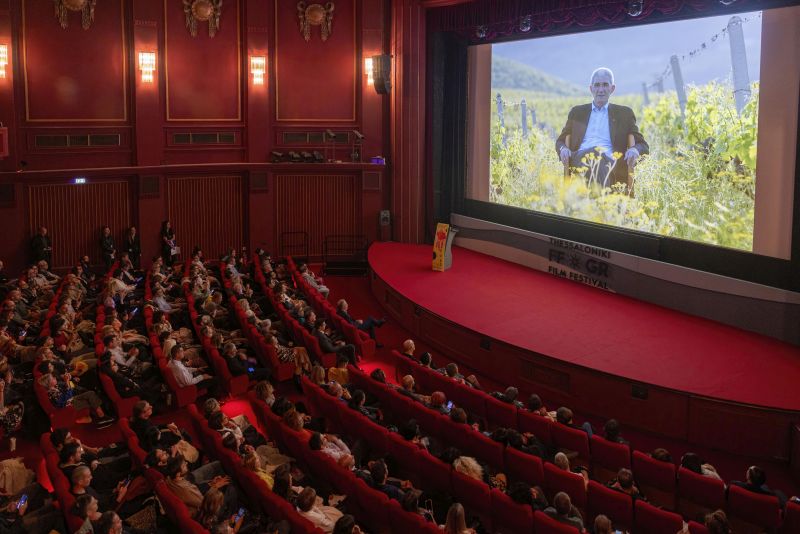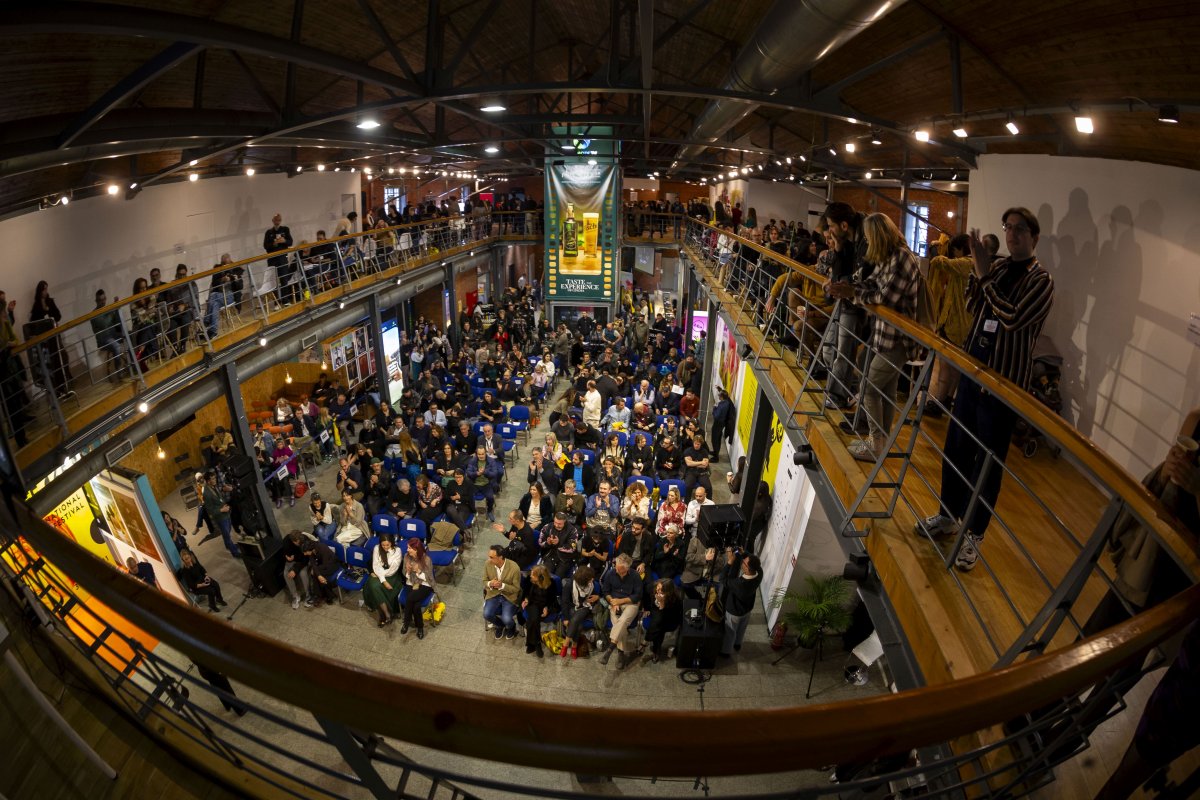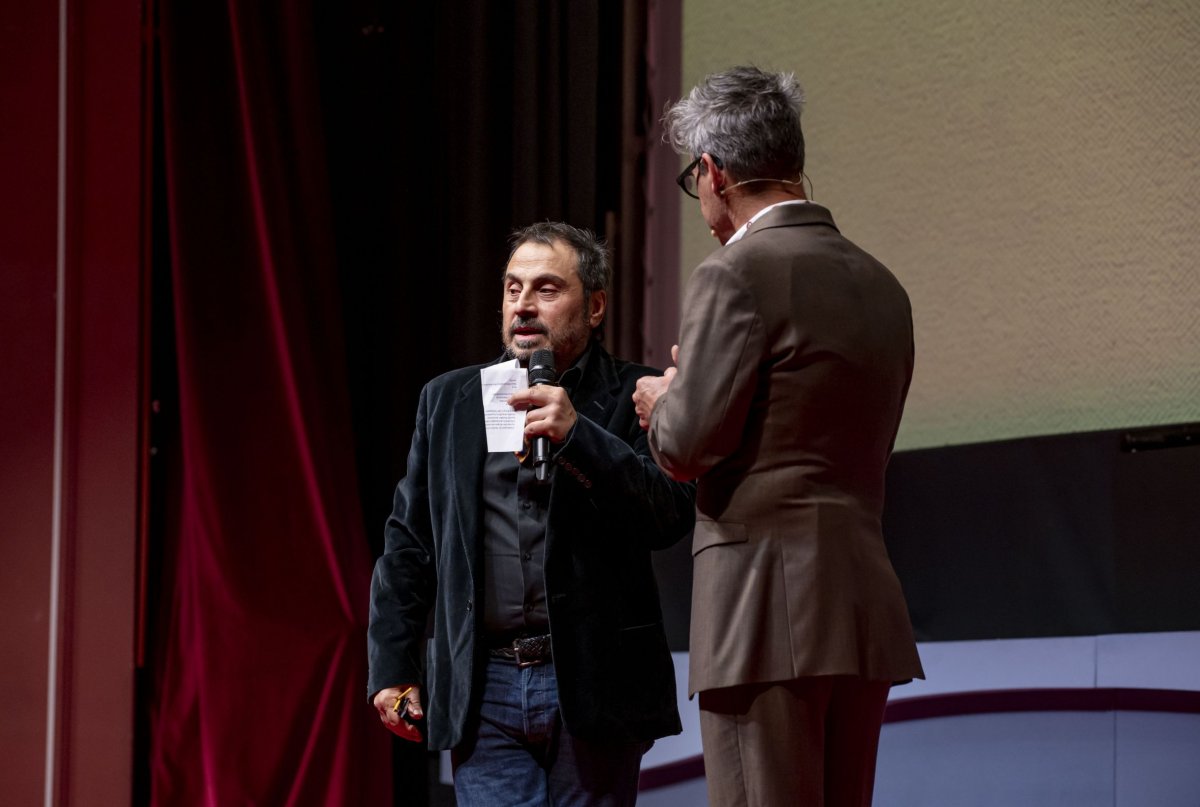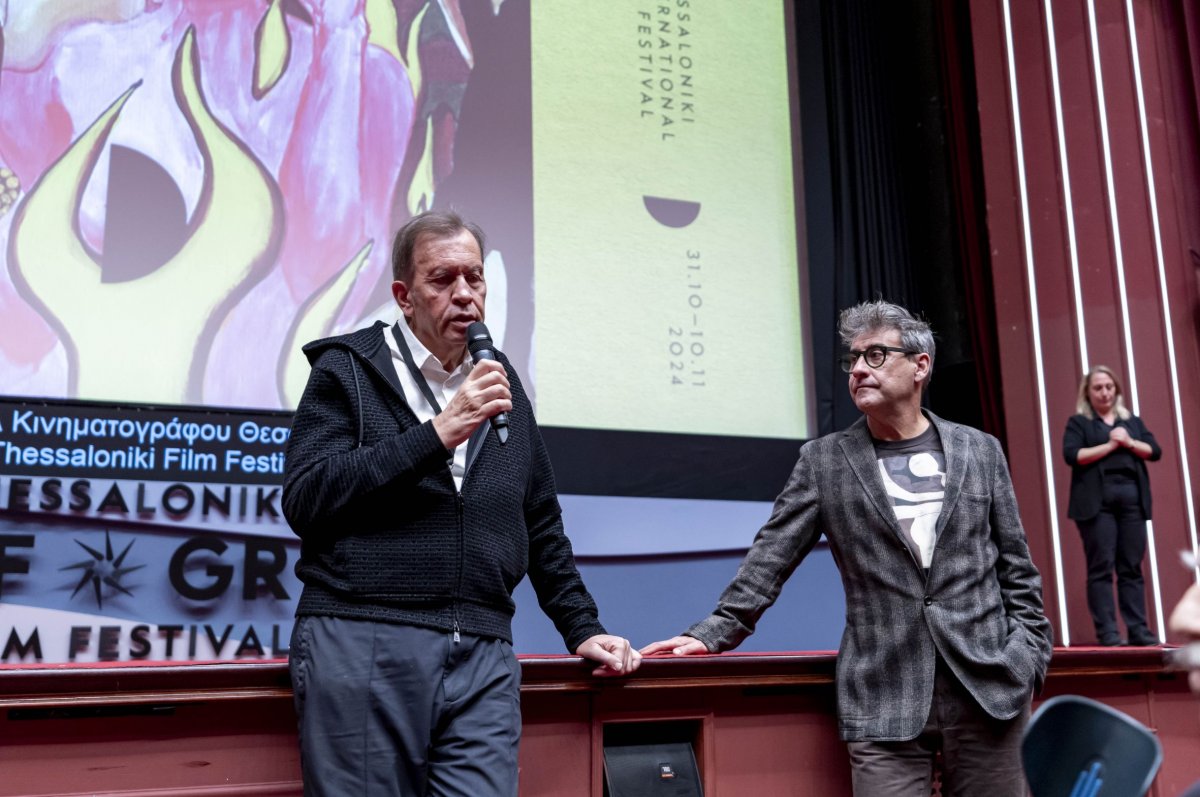The opening of the visual installation Interfears took place on Monday, November 4th, at MOMus–Experimental Center for the Arts (Warehouse B1-Port of Thessaloniki), attended by Danish artist Jesper Just, to whom the 65th Thessaloniki International Film Festival’s hosts a tribute, as well as protagonist Matt Dillon, who honors this year’s Festival edition with his presence.
In Interfears, his most recent film, Jesper Just explores the emotional landscape of an actor’s brain. Tied in an fMRI scanner, the actor (Matt Dillon) rehearses a monologue while the machine records and maps his brain waves into 2D and 3D representations. Combining the depiction of emotions with fMRI technology, the film examines emotions as cultural goods with a detached look, and assesses emotional representations as artificial – whether they are acted out by an actor or captured by a machine.
The two distinguished guests of the 65th TIFF were welcomed by the Festival’s Artistic Director, Orestis Andreadakis: “We are delighted to get a glimpse of another facet of Matt Dillon’s creative and artistic gamut, as well as Jesper Just’s intriguing installation. I’d like to thank MOMus-Experimental Center for the Arts, one of the most time-honored and faithful partners of the Thessaloniki Film Festival, the president of MOMus Board of Directors, Epaminondas Christofilopoulos, General Director Katerina Tsatsaia, the Artistic Director of MOMus-Museum of Contemporary Art Thouli Misirloglou, and all the employees of MOMus, who have been a great help to us all these years. Additionally, I’d like to express my gratitude to the Festival’s staff, who contributed to this exhibition, Thanos Stavropoulos and Yorgos Krassakopoulos. The installation will be open to the public on a daily basis, for the entire duration of the Festival,” he initially stated, and then invited Matt Dillon on stage to talk about his acquaintance with Jesper Just.
“We met at an exhibition in Berlin, where we both participated. We hit it off immediately, but it was before he spoke to me about this insane project we see here. At the beginning, we used to meet up in between New York and Berlin. He wanted to film my brain as I was playing a role. We discussed it and it became a reality. Jesper can tell you a whole lot more about this idea, which is extremely interesting,” Matt Dillon replied, giving the floor to Jesper Just.
“I had this idea for quite some time, to experiment with an MRI machine and explore an actor’s brain, as during the performing act a plentitude of emotions emerge. So, I invited him to dinner, I pitched my idea, and he accepted at once. I wished to capture an actor’s emotional landscape in the process of performing, to observe the chemical reactions and the brain waves as this process unfolds. I also wanted to show the possible difference between emotions arising during the performance, and a person’s real emotions, highlighting in this way the fact that every emotion can take the form of a representation. Of course, this is not science, it’s strictly art. If we wished to conduct a scientific experiment, we would place 200 actors through the same scanner. In reality, we staged a highly successful meeting between fiction and anatomy,” he concluded. Next, Jesper Just asked Matt Dillon which method he used to create or draw forth emotion, but also whether he gets inspired by personal experiences, situations, or extrinsic stories.
“I cannot name a single thing, it’s rather a multi-sided cocktail of inspiration. In essence, authenticity and artificiality are aligned. Of course, there was a foundation that was no other than Jesper’s script, as well as the fruitful discussion it stirred. This foundation made my job very easy, while admittedly, this is what every actor seeks: a script serving as a source of emotion. The script also prominently featured the element of music, which triggered a corresponding emotional reaction. Ultimately, a very unique amalgam was created. Another story to single out from the script revolves around a music critic who developed a contradictory reaction when he listened to music in the course of his career, which made him suffer from epileptic seizures. It was a terribly sad and gut-wrenching story, and it is stories such as this that inspired me to question how exactly the brain might react to specific stimuli,” added Matt Dillon.
Next, Jesper Just provided the audience with some additional information: “Interfears includes five different plots, all of them about people incapable of experiencing emotions. In one of them, a person is unable to feel anything at all unless he is listening to music. In one of the scanner’s results, Matt was trying to imagine listening to music, and we juxtaposed it with the scanner results from when he was indeed listening to music. The results were incredibly similar. I don’t know exactly how the brain works, or if it has some kind of association or connection with the auditory canal, but it was all very interesting. Finally, I’d like to thank Matt, who welcomed the challenges of a project like this. It was a wacky endeavor; If I were in his shoes, I would probably be terrified to go through such a thing, letting so many people peek into my head.”
Wrapping up the event, Matt Dillon pointed out that “the biggest challenge was the extreme claustrophobia I suffer from, for sure. That was my sole concern prior to being pulled into this machine. However, I am always glad to accept new challenges and projects. Who knows, perhaps the results of the MRI might illustrate both the artificial emotions I created and my genuine and utterly real fear,” he concluded.
Visual installation Interfears by Jesper Just:
Thursday, October 31 – Sunday, November 10 // 10:00-22:00
MOMus-Experimental Center for the Arts (Warehouse B1, Thessaloniki Port)
Free admission


